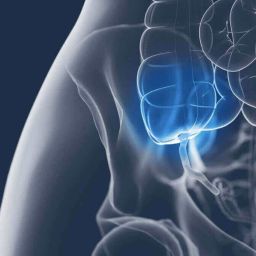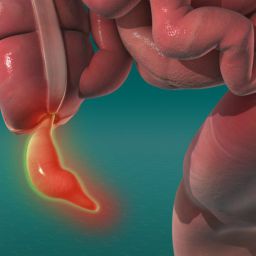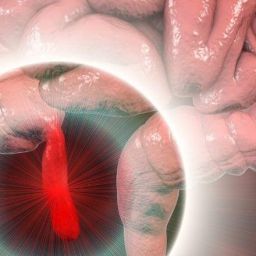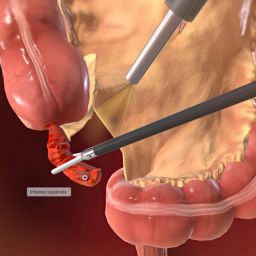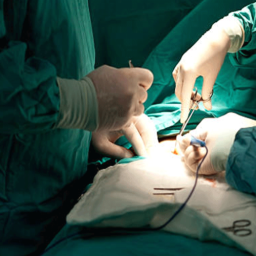
1. Appendicitis in Children: Symptoms and Diagnosis
Appendicitis in children can present differently than in adults, which can make early diagnosis a challenge. Children, particularly younger ones, may not be able to communicate their symptoms effectively, making it important for parents and healthcare providers to look out for signs of appendicitis.
a. Symptoms of Appendicitis in Children
While the classic symptoms of appendicitis include right lower abdominal pain, fever, and nausea, children often exhibit additional or less typical symptoms. Common signs in children can include:
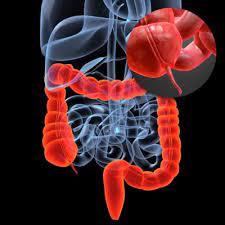
- Abdominal Pain: Often starting around the belly button and later shifting to the lower right side of the abdomen. However, the pain in children might be generalized or less localized, making the diagnosis more challenging.
- Fever and Vomiting: Many children develop fever and nausea or vomiting once the infection worsens. However, fever may not always be present, particularly in younger children.
- Change in Behavior: Younger children, especially infants, may exhibit irritability, poor feeding, or lethargy, which can be mistaken for other illnesses.
- Loss of Appetite: A decreased appetite is often a sign of appendicitis in children.
Because these symptoms can overlap with other conditions, such as gastrointestinal infections, urinary tract infections, or constipation, a prompt and accurate diagnosis is critical to prevent complications.
b. Diagnosing Appendicitis in Children
Given the challenges in diagnosing appendicitis in children, doctors often rely on a combination of physical exams, medical history, and diagnostic tests. The diagnostic process typically involves:
- Physical Examination: The healthcare provider will palpate the abdomen to check for tenderness, especially on the lower right side. Rebound tenderness, which occurs when pressure is released from the abdomen, is a key indicator of appendicitis.
- Blood Tests: Blood tests can indicate an elevated white blood cell count, which is a sign of infection. However, this alone cannot definitively diagnose appendicitis.
- Imaging Tests: Ultrasound and CT scans are commonly used to confirm appendicitis in children. Ultrasound is typically preferred because it is non-invasive and does not involve radiation, which is particularly important in pediatric care. However, if the diagnosis is unclear, a CT scan may be necessary.
Once appendicitis is confirmed, surgery is usually required to remove the appendix before it ruptures and causes more severe complications like peritonitis.
2. Surgical Process of Appendectomy in Children
The surgical removal of the appendix, known as an appendectomy, is the standard treatment for appendicitis. While the surgery itself is generally safe, several considerations must be taken into account when performing the procedure in children, such as anesthesia, the surgical approach, and post-operative care.
a. Anesthesia and Pre-Surgical Preparation
Before the surgery, the child will be given general anesthesia, which ensures they are fully asleep and pain-free during the procedure. The anesthesia team will assess the child’s overall health, medical history, and any allergies to medications to determine the safest anesthetic plan. For children with certain medical conditions or those who are very young, additional monitoring may be required during surgery.
Parents will be instructed to fast their child for several hours before the surgery to prevent complications related to anesthesia. Pre-operative medications may also be administered to reduce pain and anxiety.
b. Types of Appendectomy Procedures
In children, appendectomy can be performed in two primary ways: open surgery and laparoscopic surgery.
- Laparoscopic Appendectomy: This minimally invasive technique is increasingly common in children due to its benefits, including smaller incisions, less pain, and quicker recovery time. Laparoscopic appendectomy involves the insertion of a small camera (laparoscope) and surgical tools through tiny incisions in the abdomen. The surgeon can view the appendix on a monitor and remove it with minimal disruption to surrounding tissue.
- Open Appendectomy: In cases where the appendix has ruptured or there is significant infection, an open appendectomy may be necessary. This procedure involves making a larger incision in the lower right side of the abdomen to access the appendix. While it requires a longer recovery time and leaves a larger scar, it may be necessary for more complicated cases.
The choice between laparoscopic and open appendectomy depends on factors such as the child’s age, the severity of the appendicitis, and the surgeon’s expertise. Laparoscopic surgery is generally preferred for its shorter recovery time and lower risk of infection.
c. Duration and Risks of the Surgery
The appendectomy itself typically lasts between 30 minutes to an hour, depending on the surgical approach and complexity. Laparoscopic surgeries tend to take slightly less time compared to open surgeries.
Though appendectomy is generally considered a low-risk procedure, there are some potential complications to be aware of, including:
- Infection: Infection can occur at the incision site or in the abdominal cavity, particularly if the appendix had ruptured before surgery.
- Bleeding: Though rare, excessive bleeding can occur during surgery.
- Injury to Nearby Organs: In rare cases, the intestines, bladder, or other abdominal organs may be inadvertently injured during surgery.
- Anesthesia Risks: Although rare, anesthesia can carry risks, particularly in very young or critically ill children.
The risks are minimized by careful planning, pre-surgical assessment, and expertise of the surgical team.
3. Special Considerations for Children Undergoing Appendectomy
Performing surgery on children involves several unique considerations, as their bodies differ significantly from those of adults. Pediatric appendectomy requires adjustments in anesthesia, surgical techniques, and post-operative care to ensure the safety and well-being of the child.
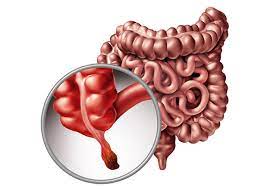
a. Pediatric Anesthesia Considerations
Children have different anatomical and physiological characteristics that make anesthesia management more challenging. For example, children’s airways are smaller, and they may have different metabolic rates than adults. Anesthesia teams must adjust the drugs and dosages to account for these differences, carefully monitoring the child’s vital signs during the procedure. The type of anesthesia used will also vary depending on the child’s age, weight, and medical condition.
Parents are usually advised to stay with their child until they are sedated and ensure that all health-related information is disclosed to the anesthesia team. Post-operative care may also involve continued monitoring in a recovery room until the child is stable.
b. Pediatric Pain Management
Managing pain after appendectomy in children is critical for ensuring a comfortable recovery. While children may experience pain after surgery, their pain tolerance can vary based on age and individual factors. Post-surgical pain is typically managed through:
- Pain Medications: Children are usually prescribed pain relief medications, such as acetaminophen or ibuprofen. In more severe cases, stronger medications, such as opioids, may be required, but these are used sparingly to avoid side effects.
- Local Anesthesia: Local anesthetics may be applied to the incision area to reduce pain immediately after surgery. This helps minimize the need for systemic pain medications, reducing the risk of side effects.
- Non-Medication Strategies: Distraction techniques, such as playing videos or engaging in fun activities, can help manage pain and anxiety for younger children.
c. Monitoring and Aftercare
Post-operative care for children is crucial to avoid complications and ensure a smooth recovery. This involves monitoring for signs of infection, ensuring the child eats and drinks adequately, and encouraging gentle activity to promote circulation. Specific considerations include:
- Incision Care: The surgical incision should be kept clean and dry. Parents will be instructed on how to clean and care for the wound at home. The child may also be advised to avoid bathing in pools or hot tubs until the incision has fully healed.
- Activity Restrictions: Children recovering from appendectomy should avoid strenuous activities for a period, typically around 2 to 4 weeks, depending on the surgical approach. They should also refrain from lifting heavy objects or engaging in competitive sports during recovery.
- Monitoring for Complications: Parents should watch for signs of complications, such as fever, persistent pain, vomiting, or difficulty urinating, which could indicate infection or other issues.
d. Emotional and Psychological Support
Children undergoing surgery often experience a mix of emotions, including fear and anxiety. Parents should provide reassurance and support during the recovery process. Depending on the child’s age, it may be helpful to involve them in the process by explaining the surgery in simple terms and offering comfort during the hospital stay.


